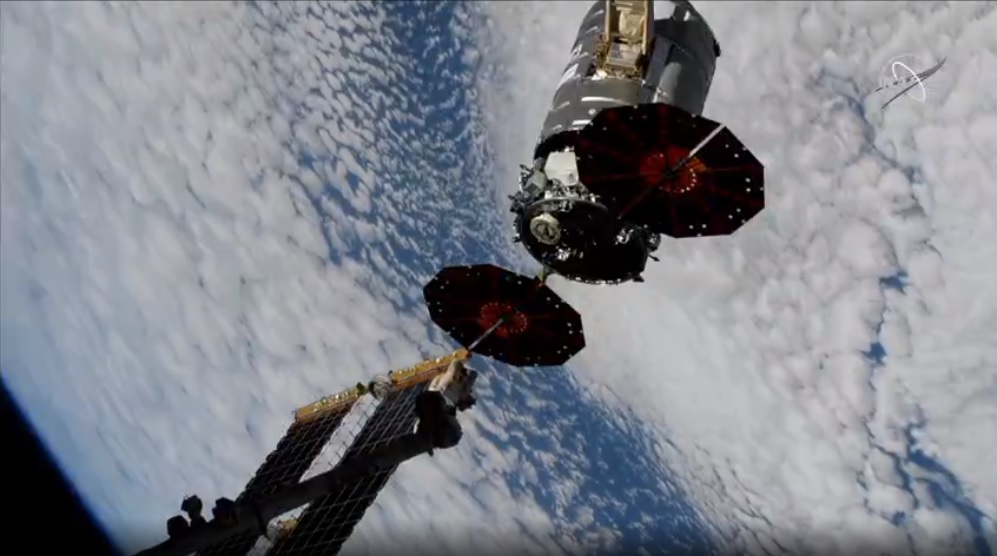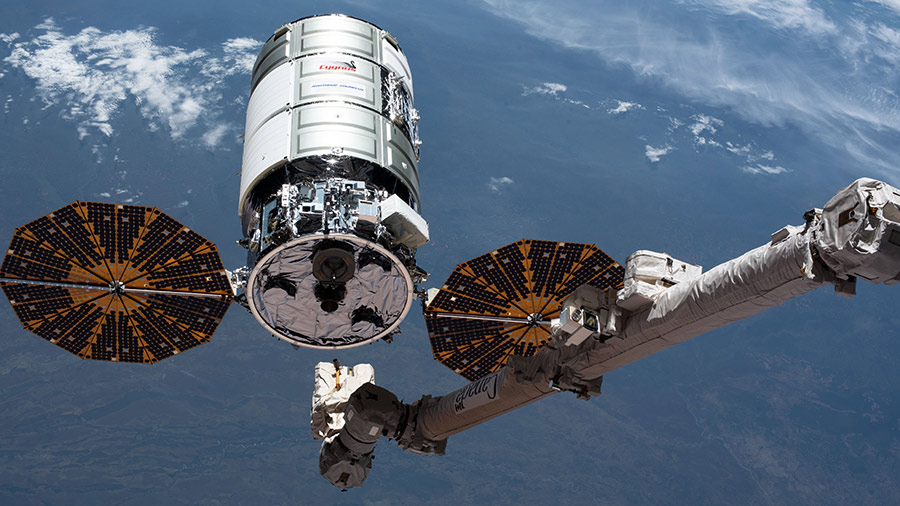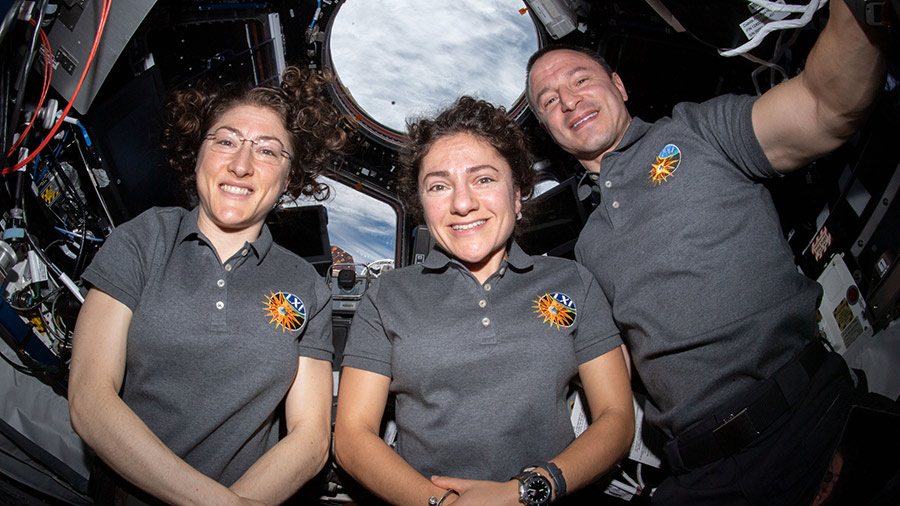U.S. Cygnus Space Freighter Departs Station After 88 Days

Northrup Grumman’s Cygnus cargo spacecraft departed the International Space Station’s at 9:36 a.m. EST after Expedition 61 Flight Engineers Andrew Morgan and Jessica Meir of NASA commanded its release from the Canadarm2 robotic arm. At the time of release, the station was flying about 250 miles over the South Pacific just off the West Coast of Chile.
For this mission, Cygnus demonstrated a new release position for departure operations and incorporated the first ground-controlled release. The new orientation allowed for easier drift away from the station’s Canadarm2 robotic arm.
Within 24 hours, Cygnus will begin its secondary mission deploying a series of payloads. The departing spacecraft will move a safe distance away from the space station before deploying a series of CubeSats: HuskySat-1 (University of Washington), SwampSat II (University of Florida), EdgeCube (Sonoma State University), and CIRis (Utah State University).
Northrop Grumman flight controllers in Dulles, Virginia, will initiate its deorbit and execute a safe, destructive reentry into Earth’s atmosphere at the end of February.
The next Cygnus is set to launch to station on Feb. 9 from NASA’s Wallops Flight Facility in Virginia carrying another batch of research.
The spacecraft arrived on station November 2 delivering cargo under NASA’s Commercial Resupply Services contract.
Mark Garcia
Powered by WPeMatico





